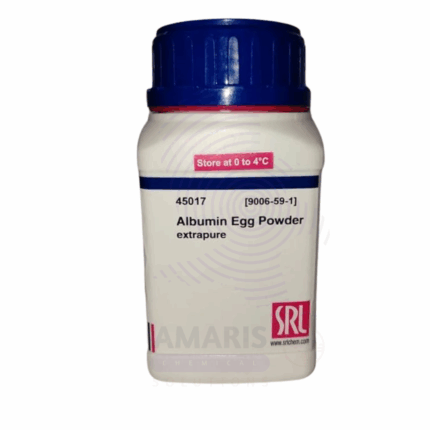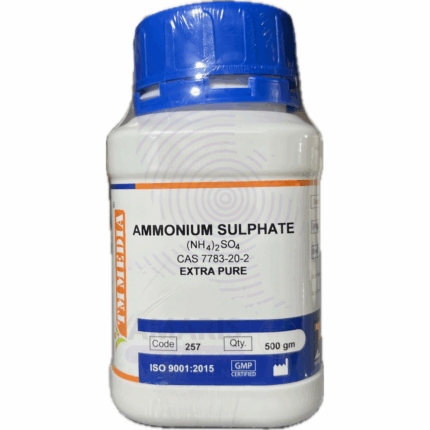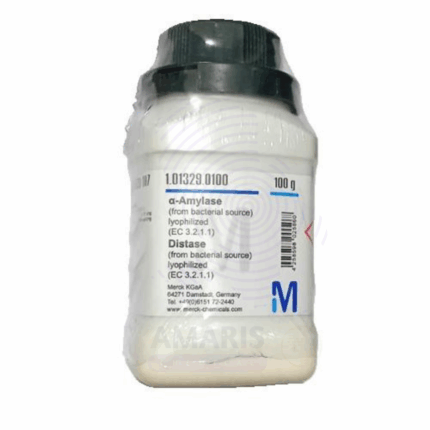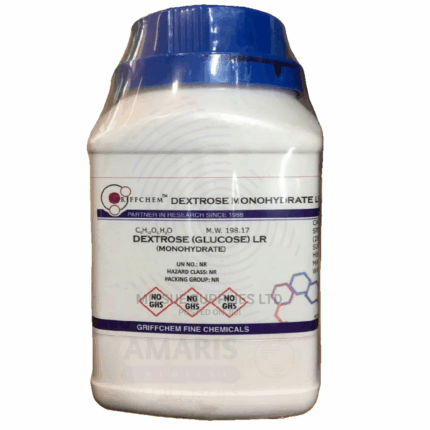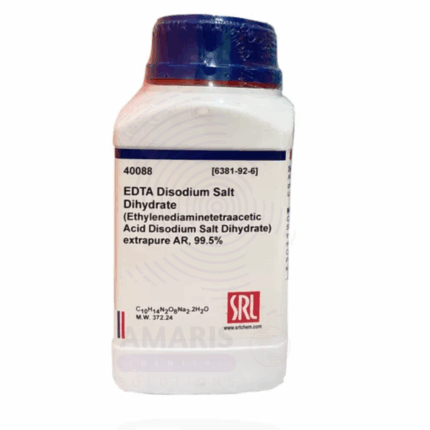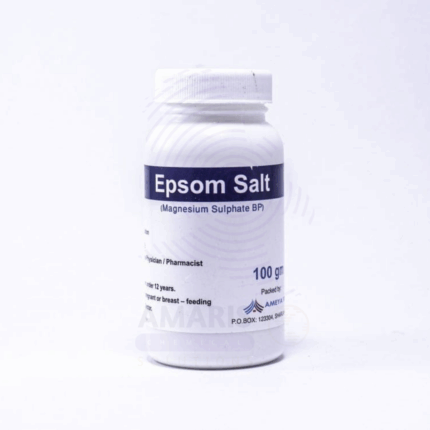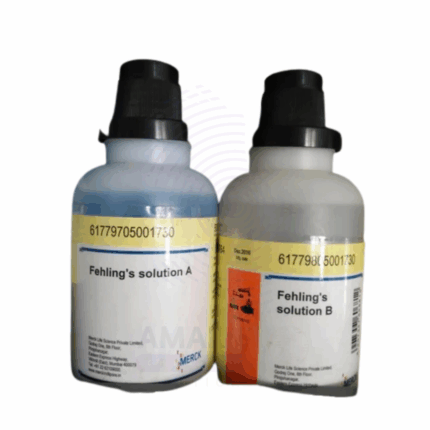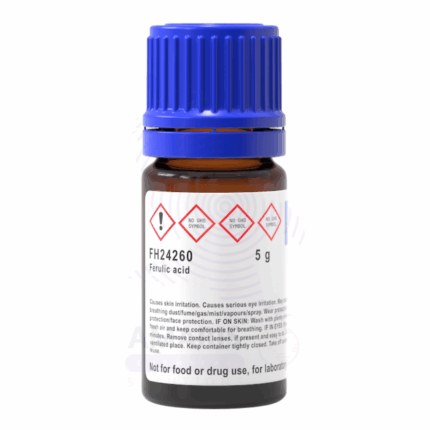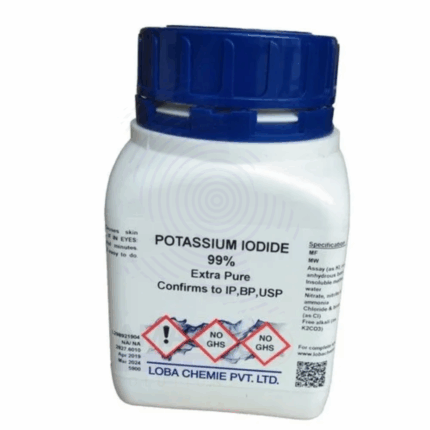

Potassium Lactate Extra Pure
$ 18.00 Original price was: $ 18.00.$ 17.98Current price is: $ 17.98.
Potassium Lactate Extra Pure is a colorless to pale yellow, clear, viscous liquid known for its high purity and effectiveness as a buffering and humectant agent. It is widely used in food processing as a preservative and moisture-retaining compound, especially in meat and poultry products to enhance shelf life and flavor retention. In pharmaceutical and cosmetic applications, it functions as a pH regulator and skin-conditioning agent due to its mild and non-irritating nature. Its extra pure grade ensures consistent performance and safety in sensitive formulations, making it suitable for laboratory, medical, and high-standard industrial uses.
Potassium Lactate Extra Pure
PRIMARY USES
- Food Industry (Preservative & Humectant):
- Used as a preservative in meat, poultry, and seafood products to inhibit microbial growth.
- Acts as a humectant, retaining moisture to extend shelf life and improve texture.
- Helps reduce sodium content in processed foods as a partial salt substitute.
- Buffering Agent:
- Used to stabilize pH levels in food products and pharmaceutical formulations.
- Pharmaceutical & Nutraceutical Formulations:
- Used in electrolyte replacement therapies and IV fluids as a source of potassium and alkalizing agents.
SECONDARY USES
- Cosmetic & Personal Care Products:
- Added as a skin-conditioning agent and pH adjuster in lotions, creams, and shampoos.
- Functions as a mild antimicrobial agent.
- Industrial Applications:
- Used in certain fermentation processes as a nutrient supplement for microbial cultures.
- May be used in biodegradable de-icing agents in some environmental applications.
1. Basic Identification Attributes
- Chemical Name: Potassium Lactate
- CAS Number: 996-31-6
- HS Code: 2918.19.90
- Molecular Formula: C₃H₅KO₃
- Synonyms:
- Lactic acid, potassium salt
- Potassium 2-hydroxypropanoate
- E326 (as a food additive)
- Physical & Chemical Properties
- Physical State: Liquid (commonly supplied as aqueous solution, ~60% concentration) or crystalline solid
- Color & Odor: Colorless to pale yellow liquid; mild, characteristic odor
- Boiling Point & Melting Point:
- Boiling Point: ~150–160 °C (for solution)
- Melting Point (anhydrous solid): ~39–42 °C
- Density/Specific Gravity: ~1.3–1.4 g/cm³ (60% solution)
- Solubility:
- Freely soluble in water
- Slightly soluble in ethanol
- pH Level: ~6.0–8.0 (for 10% solution)
- Vapor Pressure & Volatility: Low volatility
- Flash Point: Not flammable under normal conditions
- Autoignition Temperature: Not applicable
- Viscosity: Moderate viscosity (depending on concentration)
3. Safety & Hazard Attributes
- Hazard Class (GHS Classification):
- Generally not classified as hazardous
- NFPA Ratings:
- Health: 1
- Flammability: 0
- Reactivity: 0
- Exposure Limits:
- No occupational exposure limits established
- Reactivity:
- Stable under normal conditions
- Incompatible with strong acids and strong oxidizers
4. Storage & Handling Attributes
- Storage Conditions:
- Store in tightly closed containers
- Cool, dry, and well-ventilated area
- Incompatible Materials:
- Strong oxidizing agents
- Strong acids
- Container Type:
- Plastic drums, HDPE bottles
- Shelf Life & Expiration Date:
- 2 years (typical for solutions under proper storage)
- Special Handling Requirements:
- Use gloves and goggles when handling bulk quantities
- Avoid contact with skin and eyes
5. Regulatory & Compliance Attributes
- Regulatory Status:
- Approved as a food additive (E326)
- Listed under REACH and TSCA
- Hazard Symbols (GHS Pictograms):
- None required for standard solutions
- Transportation Restrictions:
- Not classified as hazardous for transport
- Waste Disposal Method:
- Dispose in accordance with local environmental regulations
- Dilute before flushing if permitted by local codes
6. Environmental & Health Impact
- Ecotoxicity:
- Low environmental hazard; readily biodegradable
- Persistence in Environment:
- Decomposes to harmless substances in the environment
- Carcinogenicity/Mutagenicity:
- Not classified as carcinogenic or mutagenic
- Biodegradability:
- Readily biodegradable
- Readily biodegradable
SAFETY PRECAUTIONS
Personal Protective Equipment (PPE):
- Protective safety goggles
- Lab coat or chemical-resistant apron
- Nitrile or latex gloves
- Ensure adequate ventilation when handling in bulk
Handling:
- Avoid contact with eyes and prolonged skin contact
- Do not inhale vapors or mist
- Use in a well-ventilated area
- Wash hands thoroughly after handling
Storage:
- Store in a tightly closed container
- Keep in a cool, dry, well-ventilated area
- Protect from moisture, strong acids, and oxidizers
FIRST AID MEASURES
Inhalation:
- Move to fresh air
- Seek medical attention if respiratory symptoms occur
Skin Contact:
- Wash with soap and plenty of water
- Remove contaminated clothing
- Seek medical advice if irritation develops
Eye Contact:
- Rinse cautiously with water for several minutes
- Remove contact lenses if present and easy to do
- Continue rinsing and seek medical attention
Ingestion:
- Rinse mouth with water
- Do not induce vomiting
- Drink water to dilute
- Get medical help immediately
FIRE FIGHTING MEASURES
Flammability:
- Non-flammable
Extinguishing Media:
- Water spray, foam, dry chemical, or carbon dioxide
Hazardous Combustion Products:
- May produce carbon monoxide, carbon dioxide, and potassium oxides upon combustion
Firefighter Protection:
- Wear self-contained breathing apparatus (SCBA)
- Prevent contaminated runoff from entering drains or water sources
Related products
Albumen From Egg Powder Extra Pure
Ammonium II Sulphate Extra Pure
Amylase Extra Pure
Dextrose Monohydrate Glucose Extra Pure
EDTA Disodium Salt Extra Pure
Epsom Salts Magnesium Sulphate Extra Pure
Fehling Solution 1 and 2 Extra Pure
- Fehling Solution 1 contains copper(II) sulfate, while
- Fehling Solution 2 contains an alkaline potassium sodium tartrate (Rochelle salt) solution.


 Preservatives(food)
Preservatives(food) Flavor Enhancers
Flavor Enhancers Acidulants
Acidulants Sweeteners
Sweeteners Antioxidants
Antioxidants Colorants(food)
Colorants(food) Nutraceutical Ingredients (food)
Nutraceutical Ingredients (food) Nutrient Supplements
Nutrient Supplements Emulsifiers
Emulsifiers
 Collectors
Collectors Dust Suppressants
Dust Suppressants Explosives and Blasting Agents
Explosives and Blasting Agents Flocculants and Coagulants
Flocculants and Coagulants Frothers
Frothers Leaching Agents
Leaching Agents pH Modifiers
pH Modifiers Precious Metal Extraction Agents
Precious Metal Extraction Agents
 Antioxidants(plastic)
Antioxidants(plastic) Colorants (Pigments, Dyes)
Colorants (Pigments, Dyes) Fillers and Reinforcements
Fillers and Reinforcements Flame Retardants
Flame Retardants Monomers
Monomers Plasticizers
Plasticizers Polymerization Initiators
Polymerization Initiators Stabilizers (UV, Heat)
Stabilizers (UV, Heat)
 Antifoaming Agents
Antifoaming Agents Chelating Agents
Chelating Agents Coagulants and Flocculants
Coagulants and Flocculants Corrosion Inhibitors
Corrosion Inhibitors Disinfectants and Biocides
Disinfectants and Biocides Oxidizing Agents
Oxidizing Agents pH Adjusters
pH Adjusters Scale Inhibitors( water)
Scale Inhibitors( water)
 Antioxidants(cosmetic)
Antioxidants(cosmetic) Emollients
Emollients Fragrances and Essential Oils
Fragrances and Essential Oils Humectants
Humectants Preservatives
Preservatives Surfactants(cosmetic)
Surfactants(cosmetic) Thickeners
Thickeners UV Filters
UV Filters
 Fertilizers
Fertilizers Soil Conditioners
Soil Conditioners Plant Growth Regulators
Plant Growth Regulators Animal Feed Additives
Animal Feed Additives Biostimulants
Biostimulants Pesticides (Herbicides, Insecticides, Fungicides)
Pesticides (Herbicides, Insecticides, Fungicides)
 Active Pharmaceutical Ingredients (APIs)
Active Pharmaceutical Ingredients (APIs) Excipients
Excipients Solvents(pharmaceutical)
Solvents(pharmaceutical) Antibiotics
Antibiotics Antiseptics and Disinfectants
Antiseptics and Disinfectants Vaccine Adjuvants
Vaccine Adjuvants Nutraceutical Ingredients (pharmaceutical)
Nutraceutical Ingredients (pharmaceutical) Analgesics & Antipyretics
Analgesics & Antipyretics
 Analytical Reagents
Analytical Reagents Solvents(lab)
Solvents(lab) Chromatography Chemicals
Chromatography Chemicals Spectroscopy Reagents
Spectroscopy Reagents microbiology-and-cell-culture-reagents
microbiology-and-cell-culture-reagents Molecular Biology Reagents
Molecular Biology Reagents Biochemical Reagents
Biochemical Reagents Inorganic and Organic Standards
Inorganic and Organic Standards Laboratory Safety Chemicals
Laboratory Safety Chemicals Specialty Laboratory Chemicals(Special Laboratory Equipment)
Specialty Laboratory Chemicals(Special Laboratory Equipment)
 Demulsifiers
Demulsifiers Hydraulic Fracturing Fluids
Hydraulic Fracturing Fluids Scale Inhibitors(oil)
Scale Inhibitors(oil) Surfactants(oil)
Surfactants(oil) Drilling Fluids
Drilling Fluids
 Dyes and Pigments
Dyes and Pigments Bleaching Agents
Bleaching Agents Softening Agents
Softening Agents Finishing Agents
Finishing Agents Antistatic Agents
Antistatic Agents
 Admixtures
Admixtures Waterproofing Agents
Waterproofing Agents Sealants and Adhesives
Sealants and Adhesives Curing Compounds
Curing Compounds Concrete Repair Chemicals
Concrete Repair Chemicals Anti-Corrosion Coatings
Anti-Corrosion Coatings
 Surfactants(cleaning)
Surfactants(cleaning) Builders
Builders Enzymes
Enzymes Solvents (Cleaning)
Solvents (Cleaning) Fragrances
Fragrances
 Electronic Chemicals
Electronic Chemicals Catalysts
Catalysts Lubricants
Lubricants Photographic Chemicals
Photographic Chemicals Refrigerants
Refrigerants Automotive chemicals
Automotive chemicals Pyrotechnic Chemicals
Pyrotechnic Chemicals
 Biodegradable Surfactants
Biodegradable Surfactants Bio-based Solvents
Bio-based Solvents Renewable Polymers
Renewable Polymers Carbon Capture Chemicals
Carbon Capture Chemicals Wastewater Treatment Chemicals
Wastewater Treatment Chemicals
 Pigments
Pigments Solvents(paint)
Solvents(paint) Specialty Coatings
Specialty Coatings Binders/Resins
Binders/Resins Additives
Additives Driers
Driers Anti-Corrosion Agents
Anti-Corrosion Agents Functional Coatings
Functional Coatings Application-Specific Coatings
Application-Specific Coatings
 Fresh Herbs
Fresh Herbs Ground Spices
Ground Spices Whole Spices
Whole Spices Spice Blends
Spice Blends Dried Herbs
Dried Herbs
 Leavening Agents
Leavening Agents Dough Conditioners
Dough Conditioners Flour Treatments
Flour Treatments Fat Replacers
Fat Replacers Decoratives
Decoratives Preservatives(baking)
Preservatives(baking)
 Plasticizers & Softeners
Plasticizers & Softeners Reinforcing Agents
Reinforcing Agents Adhesion Promoters
Adhesion Promoters Vulcanizing Agents
Vulcanizing Agents Antidegradants
Antidegradants Blowing Agents
Blowing Agents Fillers & Extenders
Fillers & Extenders Accelerators & Retarders
Accelerators & Retarders

